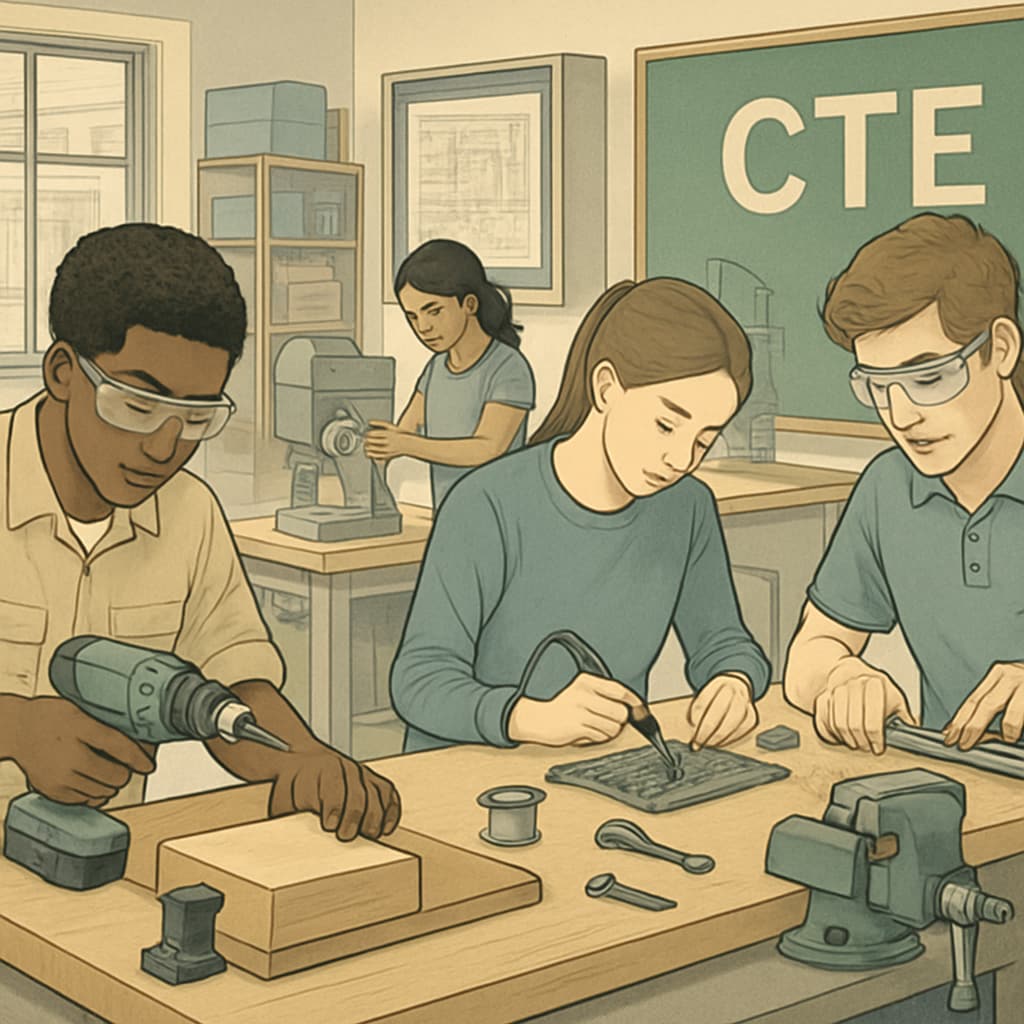The integration of Career and Technical Education (CTE) programs into school districts is fundamentally reshaping K12 education. By combining career-specific skills training with traditional academic subjects, CTE allows students to gain real-world experience without sacrificing academic rigor. This hybrid approach is proving to be a powerful tool for preparing students for both higher education and the workforce.
Understanding the Structure of CTE Programs in School Districts
The structure of CTE programs within school districts varies widely, reflecting the diversity of educational goals and community needs. Some districts implement standalone CTE academies, while others integrate vocational courses into existing curricula. For example, districts may offer pathways such as healthcare, technology, or manufacturing, enabling students to focus on fields aligned with their interests and local industry demands.
CTE programs often involve partnerships with local businesses or higher education institutions. These collaborations provide internships, mentorship opportunities, and access to state-of-the-art equipment, enhancing the quality of vocational training. Additionally, many districts align CTE curricula with national standards such as those set by Advance CTE, ensuring students learn industry-relevant skills.

The Impact of CTE on Traditional Academic Subjects
One of the most significant concerns about CTE programs is their potential impact on traditional academic subjects. Critics often worry that vocational training might detract from core subjects like math, science, literature, and history. However, research suggests that CTE can complement and even enhance traditional learning.
For instance, many CTE courses incorporate academic content directly into their curriculum. A student enrolled in a healthcare pathway might study biology and anatomy more intensively than peers in general education courses. Similarly, technology-focused programs often require advanced mathematics skills, such as algebra or calculus, to solve real-world problems. As a result, students may find traditional subjects more engaging and relevant when tied to practical applications.
Furthermore, integrated project-based learning within CTE programs often fosters critical thinking and problem-solving abilities. This pedagogical approach encourages students to apply theoretical knowledge in practical scenarios, bridging the gap between academic and vocational education.

Evaluating the Long-Term Benefits of CTE Implementation
CTE programs have shown promising results in improving student outcomes. According to studies by the Brookings Institution, students enrolled in CTE courses are more likely to graduate from high school and pursue postsecondary education. Additionally, they often demonstrate higher levels of engagement and motivation compared to peers in traditional academic tracks.
These benefits extend beyond the classroom. Employers increasingly value candidates with technical skills, making CTE graduates more competitive in the job market. By providing students with hands-on experience and industry certifications, CTE programs ensure they are workforce-ready upon graduation.
Challenges in Balancing Vocational and Academic Education
Despite its advantages, implementing CTE programs is not without challenges. Balancing vocational training with academic rigor requires careful planning and resource allocation. School districts must invest in specialized equipment, teacher training, and curriculum development to ensure the effectiveness of CTE programs.
Another challenge is overcoming the stigma associated with vocational education. Historically, CTE has been viewed as a less prestigious alternative to traditional academic paths. To counter this perception, districts must communicate the value of CTE programs to parents, students, and community stakeholders.
Ultimately, the success of CTE depends on its ability to integrate seamlessly with traditional education while meeting the specific needs of each student. By striking this balance, school districts can create a more inclusive and effective K12 education system.
Readability guidance: Short paragraphs and lists have been used to present information clearly. Transition words like “however,” “in addition,” and “for example” ensure smooth flow. Images are strategically placed to complement the text.


